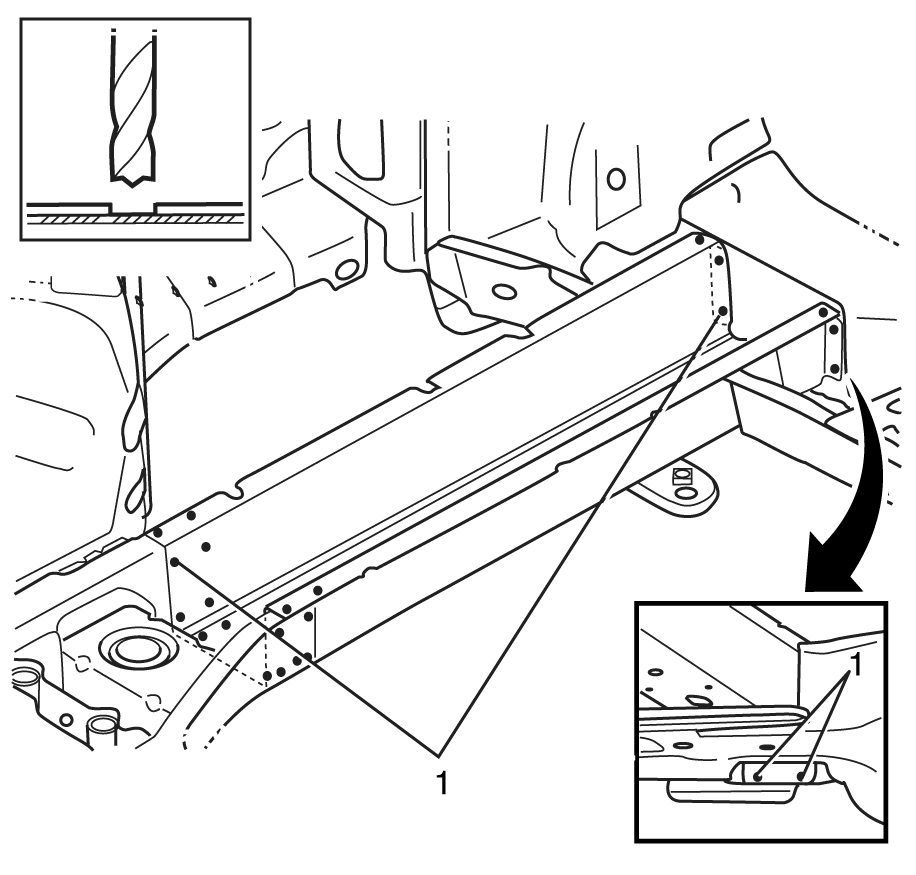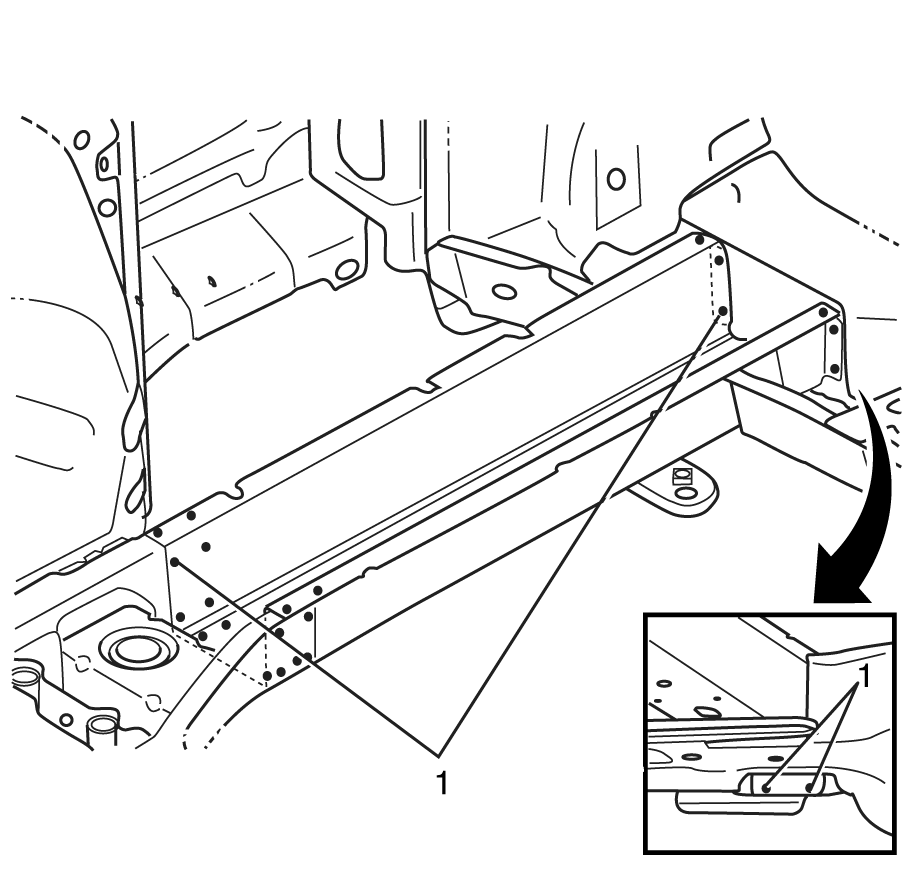Removal Procedure
- Disable the SIR system. Refer to SIR Disabling and Enabling .
- Disconnect the negative battery cable. Refer to Battery Negative Cable Disconnection and Connection .
- Remove the cargo liner. Refer to Cargo Box Liner Replacement .
- Raise and support the vehicle. Refer to Lifting and Jacking the Vehicle .
- Remove the rear wheelhouse liner. Refer to Rear Wheelhouse Panel Liner Replacement .
- Remove the rear bumper fascia. Refer to Rear Bumper Fascia Replacement .
- Remove the endgate. Refer to Endgate Adjustment .
- Remove the rear muffler assembly. Refer to Exhaust Muffler Replacement - Left Side and/or Exhaust Muffler Replacement - Right Side .
- Remove the rear muffler hanger bracket. Refer to Exhaust Hanger Mounting Bracket Replacement .
- Remove the rear floor. Refer to Rear Floor Panel Replacement .
- Remove the spare wheel support carrier. Refer to Spare Wheel Hoist Reinforcement .
- Note the location and remove the sealers and anti-corrosion materials from the repair area, as necessary. Refer to Anti-Corrosion Treatment and Repair .
- Locate, mark and drill out the factory welds attaching the rear rail to the vehicle welds (1).
- Remove the appropriate rail section from the vehicle.
Caution: Refer to Approved Equipment for Collision Repair Caution in the Preface section.
Caution: Refer to Battery Disconnect Caution in the Preface section.
Caution: Refer to Vehicle Lifting Caution in the Preface section.
Caution: Refer to Safety Glasses Caution in the Preface section.

Installation Procedure
- Prepare the mating surfaces, as necessary.
- Apply 3M Weld-Thru Coating or equivalent to all mating surfaces.
- Align the rear rail extension using the datum points on the vehicle and using the locations marked during removal (1).
- Weld the rear rail to the vehicle (1) .
- Apply the sealers, and anti-corrosion materials to the repair area, as necessary. Refer to Anti-Corrosion Treatment and Repair .
- Paint the repaired area. Refer to Basecoat/Clearcoat Paint Systems .
- Install the rear floor. Refer to Rear Floor Panel Replacement .
- Install the spare wheel support carrier. Refer to Spare Wheel Hoist Reinforcement .
- Install the rear muffler hanger bracket. Refer to Exhaust Hanger Mounting Bracket Replacement .
- Install the rear muffler assembly. Refer to Exhaust Muffler Replacement - Left Side and/or Exhaust Muffler Replacement - Right Side .
- Install the endgate. Refer to Endgate Adjustment .
- Install the rear bumper fascia. Refer to Rear Bumper Fascia Replacement .
- Install the rear wheelhouse liner. Refer to Rear Wheelhouse Panel Liner Replacement .
- Lower the vehicle. Refer to Lifting and Jacking the Vehicle .
- Install the cargo liner. Refer to Cargo Box Liner Replacement .
- Connect the negative battery cable. Refer to Battery Negative Cable Disconnection and Connection .
- Enable the SIR system. Refer to SIR Disabling and Enabling .
Important: Spot welding is the preferred method for attaching panels and should be used whenever possible. A plug weld should only be performed where spot welding is not possible.
Important: If the location of the original plug weld holes cannot be determined, or if structural weld-thru adhesive is present, space the plug weld holes every 32 mm (1¼ in).

Important: Secondary sealer must be applied to the perimeter of all flanges. Secondary sealer must be applied to all welds/joints that were originally covered by secondary sealer.
